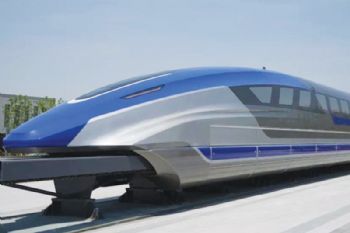
According to a report in the
International Rail Journal, China plans to start construction next year of a 200km railway line in Hubei province to test a prototype maglev train that can reach speeds in excess of 600kph.
First reported in the
Wuhan Evening News, the project is part of China’s Building Outline for the Construction
of a Powerful Country initiative and could form the first section of a maglev line linking the cities of Wuhan and Guangzhou.
Maglev technology would cut the time for the 968km trip from the current fastest journey time of 3hr 43min by rail to around 2hr.
CRRC Qingdao Sifang completed the test maglev train in May after three years of research.
It has a new-generation aluminium-alloy body that is lightweight yet strong and is designed to mitigate aerodynamic resistance and lift.
It features foil windings for the electromagnets and precision castings for the levitation frame. CRRC developed the levitation, guidance, speed detection and location detection systems, as well as the control system.
The train has a 24MVA traction converter system and a high-speed and multi-section traction control system.
It uses high-temperature superconducting magnetic levitation technology, which is designed to generate less heat, produce greater traction, and achieve a higher maximum speed than other types of maglev train.
China’s Beijing to Shanghai and Beijing to Wuhan and Guangzhou high-speed lines are currently operating at 82% of capacity, with traffic growing strongly.
Studies are currently underway to increase the length of high-speed trains on the Beijing to Shanghai line from 16 coaches to 17.
China sees maglev as a way of relieving the pressure on these lines, as well as helping to give it a technological lead. Maglev is also seen as a way to plug the gap between high-speed trains and jet aircraft.
The country’s first maglev line — linking Shanghai Pudong International Airport with Longyang Road metro station — opened in 2002, using German technology; it is 30km long.
Since then, an 18.6km maglev line linking Changsha South with Huanghua International Airport was completed in April 2016, a 9km elevated maglev line serving the western part of Beijing opened in December 2018, and a maglev line in Qingyuan (Guangdong province) is due to open this year.